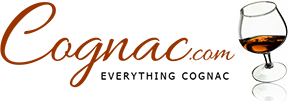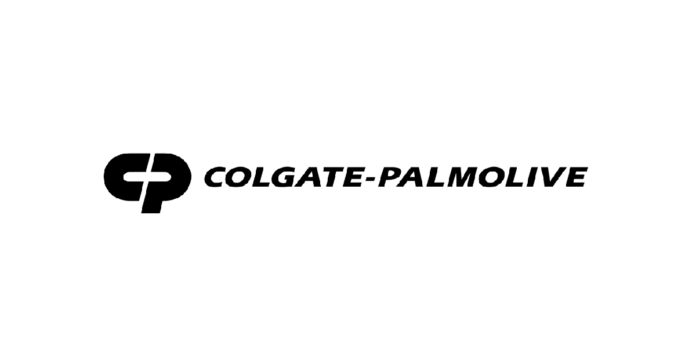NEW YORK, NY – July 27, 2025 – In a global economy marked by persistent volatility and shifting consumer behaviors, Colgate-Palmolive (NYSE: CL), the venerable consumer products giant, continues to demonstrate remarkable resilience. With its iconic portfolio spanning oral care, personal care, home care, and a burgeoning pet nutrition segment, the company has leveraged brand loyalty and strategic innovation to maintain steady performance. However, recent analyses from leading financial institutions present a nuanced picture for investors, with some advocating for a cautious “Hold” while others see a clear “Buy” opportunity at the current price of $87.93 per share.
The company’s latest financial disclosures reveal a continuation of its consistent revenue trajectory. In the trailing twelve months ending March 31, 2025, Colgate-Palmolive reported net sales of $19.947 billion. More impressively, the firm generated a robust $3.467 billion in free cash flow over the same period, a testament to its operational strength and efficiency in a challenging environment.
Deep Dive into Valuation: A Tale of Two Models
A comprehensive valuation analysis, leveraging the proprietary McGrew Framework Model, provides insights into Colgate-Palmolive’s intrinsic value. This framework employs two distinct methodologies: the Buffett-Inspired Valuation Method and the McGrew Growth Valuation Method, both utilizing an 8% discount rate and a 2.5% perpetual growth rate, anchored by the trailing twelve-month free cash flow. A crucial 40% margin of safety is applied to account for market uncertainties and provide a buffer for investors.
The Buffett-Inspired Valuation Method, which assumes a constant 3% growth on recent free cash flow, calculates an intrinsic value of $73.87 per share. After applying the 40% margin of safety, the target price adjusts to $44.32. Comparing this to the last closing price of $87.93, this method suggests that the stock is currently overvalued, falling within the 80% to 125% range of its current price. This leads to a “Hold” recommendation for conservative investors, implying that while the company is fundamentally sound, the current market price may not offer sufficient upside for deep value plays.
Conversely, the McGrew Growth Valuation Method paints a more optimistic picture. This approach utilizes a variable growth rate, beginning at 11.05% (derived from the company’s impressive 3-year free cash flow compound annual growth rate) and linearly declining to 6% over a ten-year horizon. This model estimates an intrinsic value of $120.26 per share. With the 40% margin of safety applied, the target price stands at $72.16. Since this intrinsic value significantly exceeds the closing price (by more than 25% but less than 50%), the McGrew Growth Valuation Method issues a “Buy” recommendation, suggesting a compelling opportunity for investors seeking growth.
Intrinsic Value Results Table
| Stock Ticker | Valuation Method | Intrinsic Value per Share | Price with 40% Margin of Safety | Last Closing Price | Action |
| CL | Buffett-Inspired Valuation Method | $73.87 | $44.32 | $87.93 | Hold |
| CL | McGrew Growth Valuation Method | $120.26 | $72.16 | $87.93 | Buy |
This divergence in recommendations highlights the ongoing debate among analysts regarding Colgate-Palmolive’s growth trajectory and how heavily to weigh recent performance against long-term, more conservative projections.
Analyst Perspectives: Cautious Optimism Amidst Headwinds
Industry analysts are largely aligned on Colgate-Palmolive’s fundamental strengths but offer varied outlooks on its near-term stock performance. According to a consensus of 14 analysts, Colgate-Palmolive holds a “Buy” rating with an average price target of $100.54, suggesting a potential 14.34% increase over the next year. Individual price targets range from a low of $87 to a high of $109.
Andrea Faria Teixeira of J.P. Morgan recently reiterated a “Buy” rating with a price target of $99, citing the company’s strong brand positioning and disciplined capital allocation. “Colgate’s ability to consistently generate free cash flow, even in a tightening consumer environment, is a testament to its operational efficiency and the inelastic demand for its products,” she commented in a recent client note.
However, some analysts express caution. Lauren Lieberman from Barclays maintains a “Hold” rating with a target of $87, observing that while Colgate-Palmolive is a robust performer in the consumer staples sector, its current valuation may already reflect much of its intrinsic value. “The consistent performance is admirable, but for new entry, we’d like to see a more compelling discount,” Lieberman stated.
Christopher Carey from Wells Fargo takes a more bearish stance, reiterating a “Sell” rating with a price target of $88. “While Colgate has strong fundamentals, the challenges from tariffs and a potentially weakening consumer, as noted in their Q1 earnings call, could put pressure on margins and earnings growth in the near term,” Carey explained. “We believe the stock might face headwinds before seeing significant upside.”
These differing views underscore the complexities of valuing a mature, yet consistently performing, consumer staples company in a dynamic global landscape.
Operational Prowess and Financial Health
Beyond the valuation models, Colgate-Palmolive’s financial metrics consistently demonstrate strong operational efficiency. The trailing 12-month Return on Equity (ROE) stands at an exceptional 839%, a figure that reflects not only robust profit generation but also the strategic impact of aggressive share buybacks and consistent dividend payments, which reduce the equity base. The trailing 12-month Return on Tangible Assets (ROTA) is 27.6%, showcasing effective utilization of its physical assets. These impressive returns are supported by a healthy net profit margin of 15.3% and an operating margin of 21.85% in the trailing twelve months.
Colgate-Palmolive’s revenue growth has been steady, with a 5-year CAGR of 6.4% and a 3-year CAGR of 7.4%. This growth is primarily fueled by organic sales expansion, particularly in key emerging markets like Latin America and Asia Pacific. Earnings growth mirrors this positive trend, with a 5-year CAGR of 4.7% and a more accelerated 3-year CAGR of 14.2%, reflecting recent gains in efficiency and pricing power. The company’s free cash flow yield of 4.42% indicates solid cash generation relative to its enterprise value of $78.417 billion. With capital expenditures at a manageable 16.12% of free cash flow, Colgate-Palmolive retains significant capital to return to shareholders through a 59.1% dividend payout ratio and ongoing share buybacks, which reduced shares outstanding by 1.1% in the latest year and 5% over the past five years.
Debt management remains a key strength, with a conservative debt-to-cash ratio of 7.77 and a debt-to-equity ratio of 40.15. The interest coverage ratio of 14.83 comfortably ensures the company can meet its debt obligations. While the current ratio of 0.92 suggests a balanced liquidity position, the ultra-conservative cash ratio of 0.07 highlights the company’s reliance on robust operational cash flows rather than excessive liquid assets to cover short-term liabilities. The capital structure is predominantly long-term debt (92% of total debt), providing stability and predictability.
Strategic Moats and Future Outlook
Colgate-Palmolive’s qualitative factors further cement its investment appeal. The company benefits from a durable competitive advantage stemming from its deep-seated brand loyalty and formidable intangible assets. Brands like Colgate toothpaste command an impressive 40.9% global toothpaste market share, underpinned by consistent product quality, effective marketing campaigns, and a wide network of dental professional endorsements. Morningstar, a prominent investment research firm, assigns Colgate-Palmolive a wide economic moat, attributing it to these strong brand intangibles and cost advantages derived from its vast scale. Recent innovations, particularly in premium products for whitening and sensitivity, further reinforce its market leadership.
The business model inherently requires low capital requirements for growth, allowing a significant portion of its free cash flow to be distributed to shareholders. This capital efficiency is a key attraction for income-focused investors and contributes to sustained buyback programs without heavy reinvestment in fixed assets.
The consumer staples industry, in which Colgate-Palmolive operates, demonstrates high resilience. Demand for essential products like oral and personal care items remains relatively stable, even amidst economic downturns or technological shifts. Post-pandemic, the company has witnessed a steady recovery in category growth, underscoring the non-discretionary nature of its offerings.
In terms of competitive dynamics, Colgate-Palmolive holds a strong position within a concentrated industry. While facing formidable rivals like Procter & Gamble (larger and more diversified, but with higher exposure to cyclical categories), Unilever (strong in emerging markets but with ongoing operational challenges), and Johnson & Johnson (focused on health products), Colgate’s specialized portfolio in high-loyalty oral care provides a distinct edge in brand penetration and consumer stickiness.
Looking ahead, CEO Noel Wallace conveyed a cautiously optimistic outlook during the Q1 2025 earnings call. Despite acknowledging the “volatile environment,” Wallace expressed confidence in the company’s strategic initiatives. Colgate-Palmolive anticipates low single-digit net sales growth for the full year 2025, with organic sales projected between 2% and 4%. Earnings per share are also expected to grow in the low single digits, with gross margins remaining largely flat, alongside continued strategic investment in advertising. Wallace highlighted ongoing efforts to mitigate the estimated $200 million impact from tariffs and anticipates a gradual recovery in the second half of the year, driven by innovation and expansion within the pet nutrition segment. CFO Stan Sutula emphasized the company’s flexible profit and loss statement, enabling it to adapt to uncertainties and support profitability.
Valuation Assumptions and Limitations
The valuation analysis utilized the Buffett-Inspired method with a constant 3% growth rate and the McGrew Growth method with a variable growth rate starting at 11.05% (3-year FCF CAGR) and declining to 6% over 10 years. Both methods applied an 8% discount rate and a 2.5% perpetual growth rate, adjusted for net debt of $7,157 million. Key assumptions included no restricted cash offset and the use of trailing twelve-month free cash flow. It’s important to note the limitations of any financial model, including the potential for missing historical data and the reliance on a 3-year CAGR for growth stock classification despite a lower 5-year rate.
Conclusion: A Staple with Growth Potential
Colgate-Palmolive’s robust financial metrics and strategic focus firmly position it for long-term value creation. The “Buy” recommendation under the McGrew model reflects strong confidence in the company’s recent growth trends and its ability to adapt to market challenges. Conversely, the “Hold” recommendation from the Buffett-Inspired model suggests a more conservative stance, advising caution for investors prioritizing significant undervaluation. As the company navigates the complexities of tariffs and potential softening consumer demand, its wide economic moat and consistent cash generation serve as significant buffers. Investors are encouraged to closely monitor category recovery, ongoing innovation pipelines, and the company’s ability to manage global macroeconomic headwinds for continued upside potential.
Additional Quantitative Results Table
| Metric Name | Value | Timeframe |
| ROE | 839% | TTM |
| ROE | 742% | Latest Year |
| ROE | 539% | 3-Year Avg |
| ROE | 2.7% | 5-Year CAGR |
| ROIC | 44.8% | TTM |
| Gross Profit Margin | 60.7% | TTM |
| Net Profit Margin | 15.3% | TTM |
| Return on Tangible Assets | 27.6% | TTM |
| Debt-to-Cash | 7.77 | Latest |
| Debt-to-Equity | 40.15 | Latest |
| Ultra-Conservative Cash Ratio | 0.07 | Latest |
| Earnings Growth Rate | 4.7% | 5-Year CAGR |
| Earnings Growth Rate | 14.2% | 3-Year CAGR |
| Revenue Growth Rate | 6.4% | 5-Year CAGR |
| Revenue Growth Rate | 7.4% | 3-Year CAGR |
| Free Cash Flow Yield | 4.42% | TTM |
| Operating Margin | 21.85% | TTM |
| Current Ratio | 0.92 | Latest Year |
| Interest Coverage Ratio | 14.83 | TTM |
| CapEx as % of FCF | 16.12% | TTM |
| Dividend Payout Ratio | 59.1% | TTM |
| Per Share Book Value Growth | -64.8% | Latest Year |
| Share Buyback/Dilution Trends | -1.1% | Latest Year (Buyback) |
| Share Buyback/Dilution Trends | -5% | 5-Year (Buyback) |
| Capital Structure (Short-Term vs. Long-Term Debt) | 8% Short-Term, 92% Long-Term | Latest |
| Debt-Adjusted ROE | 35.2% | TTM |
| Debt-Adjusted ROE | 22% | 3-Year Avg |

